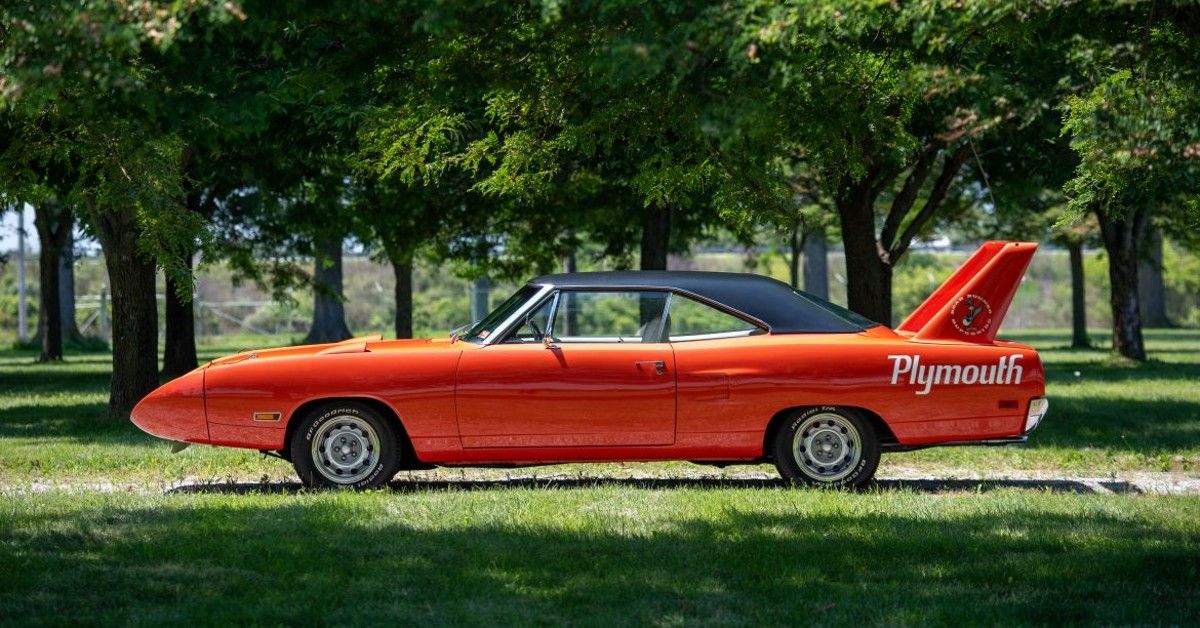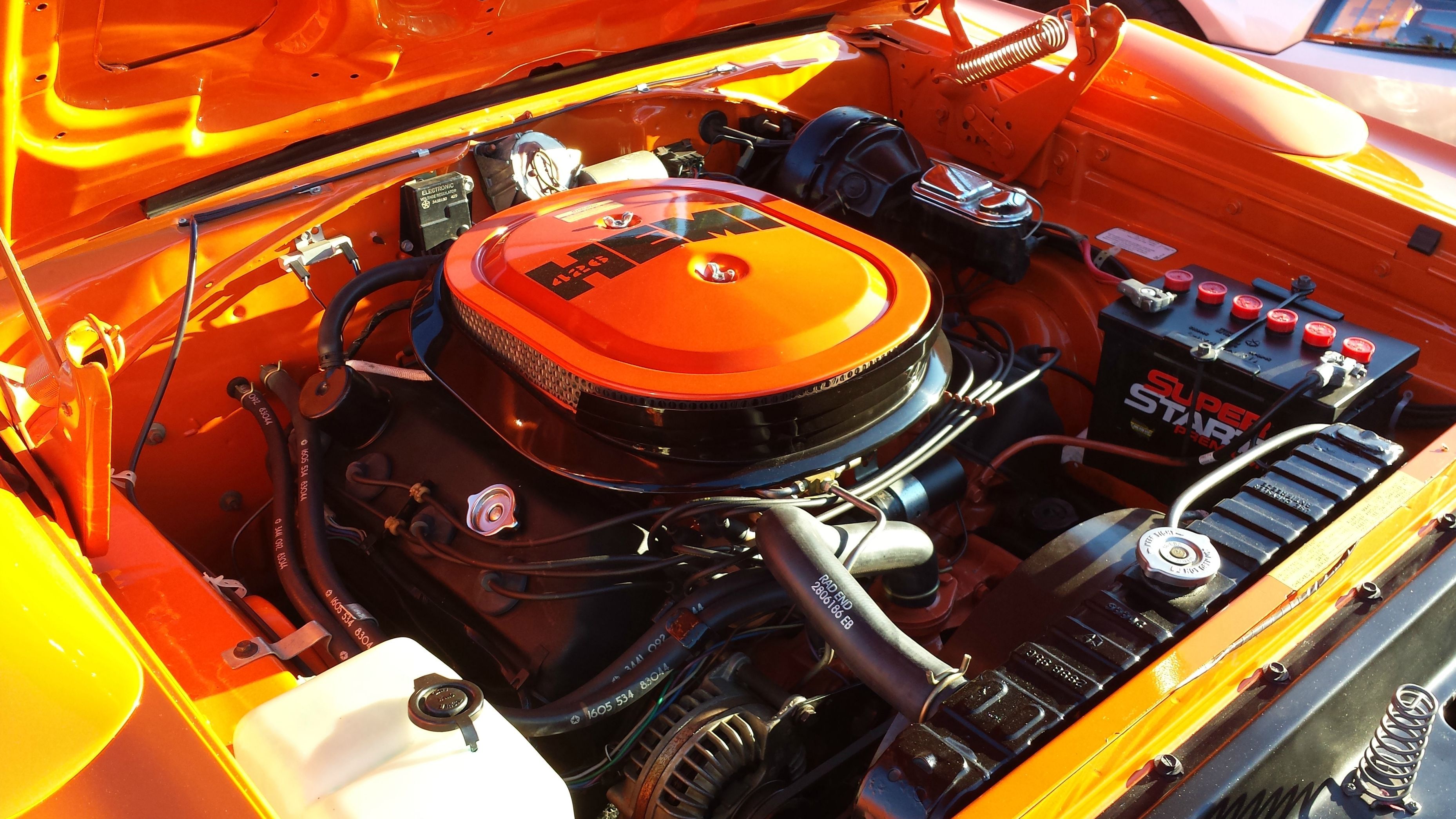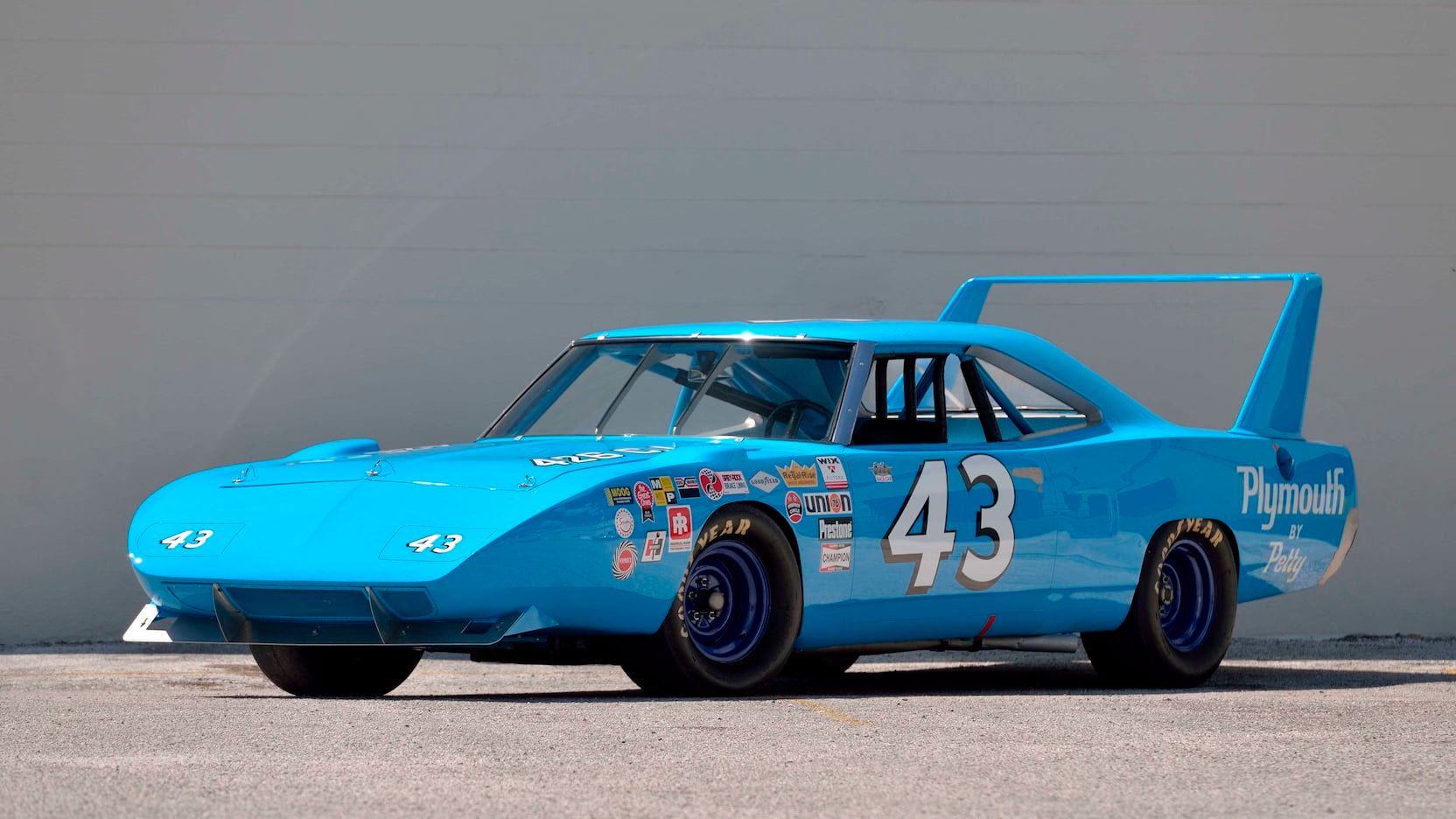The Plymouth Superbird was a famous 2-door race car with a stellar resume. The iconic hot rod was based on the firm's critically acclaimed mid-size sedan, the Plymouth Roadrunner, but in addition, it featured a host of tasteful upgrades that helped it conquer the NASCAR circuit with authority. The Superbird incorporated several design cues from its sister car, the Charger Daytona, but distinguished itself as a racer with the addition of an enormous rear spoiler as well as a cone-shaped front end that helped refine its aerodynamic capabilities.
The Plymouth Superbird was a direct competitor to the likes of the Ford Torino Talladega and even the Mercury Cyclone. However, the Plymouth's 'aero-car' derived design language, as well as an explosive 'Hemi' powertrain, helped solidify its stance as one of the most tactical muscle cars to have entered the NASCAR circuit at the time. With only 1,920 examples of the iconic racer in existence, the exclusivity factor surrounding the Superbird remains even higher.
The Superbird's meticulous attention to detail regarding its performance and handling dynamics helped it stand out from the competition. The iconic hot rod hit a sweet spot in its driving character, with its superior aerodynamic capabilities derived from its design and explosive powertrain options working in tandem to accentuate its racy persona and establish it as one of the most influential muscle cars ever.
Its Unique Design Language
The 1970 Plymouth Superbird was undeniably one of the most radically designed muscle cars to enter the NASCAR racing scenario. The Superbird, in essence, was a modified version of the revered Plymouth Road Runner, with its overall design language inspired by the likes of the Charger Daytona.
The Superbird's manic performance dynamics were complemented further with its superior aerodynamic capabilities. The purpose-built race car featured a huge nose cone at the front, as well as a massive rear spoiler that worked in tandem to make it as 'slippery' as possible.
In other words, the razor-sharp Superbird was engineered to cut through the air and generate enough downforce to make it one of the most agile and quick-paced machines on the NASCAR circuit.
Additionally, the Superbird's exterior detailing and graphics gave it an identity of its own that made it stand out from the competition. The aerodynamic racer featured the iconic 'Road Runner' cartoon character holding a helmet decal on its rear spoiler, as well as an immensely innovative 'Beep Beep' horn system that only polished its one-of-a-kind personality that much more.
The Superbird's Prudent Powertrain Options
The Superbird was known for its quick-paced performance dynamics and razor-sharp handling characteristics. The purpose-built racer was granted a variety of iconic powertrain options that only added to the dynamism of its overall package.
The standard aerodynamic hot rod could be customized with a competent 7.2-Liter V8 engine that churned out a respectable 375 hp. In comparison, the menacing race versions of the iconic muscle car featured the revered 426 cubic-inch 7.0-Liter 'Hemi' powermill that dished out an enormous 426 hp.
The 'Hemi' Superbird was undeniably one of the most popular iterations of the race car during its time on the NASCAR circuit, and could demolish the 60 mph mark in an impressive 5.5 seconds. While the regular Road Runner was quicker off the line in a racing environment, the Superbird held its own in the long run with its superior aerodynamic capabilities stemming from its highly-functional rear spoiler and cone-shaped front end.
The purpose-built racer outshone the competition with its rock-solid stability and unparalleled handling characteristics, even conquering the iconic 200 mph mark with relative ease.
The Plymouth Superbird's Inspiring Legacy
The Plymouth Superbird's entry into the racing scenario detailed its individuality at the time. The iconic racer was conceived for the sole purpose of devouring racetracks on the NASCAR circuit, with its overall package dripping with engineering ingenuity.
The Superbird's superior aerodynamic capabilities, powerful engine options, and a one-of-a-kind personality helped it stand out from the rest of the competition, with its stint on the racetracks proving to be immensely successful.
With NASCAR modifying its rules pertaining to a race car's maximum engine capacity in 1971, the Superbird's short stint as one of the most powerful and iconic racers on the circuit came to an end.
However, the purpose-built 'Hemi' hot rod left behind an unforgettable legacy that holds its own in the modern era as well. The Superbird is one of the most revered collector classics in the muscle car segment today, with acceptable examples of the racer selling for handsome six-figure sums at auctions.
The Plymouth Superbird details the very essence of what a race car should be even in the modern era. The iconic hot rod was conceived at a time when quick-paced racers were the need of the hour, with the popularity and presence of NASCAR proving to be immensely influential in the manufacturing decisions of several automakers. The Superbird capitalized on the pros of its base car, the Plymouth Roadrunner, but managed to create an identity of its own with its superior handling dynamics and explosive powertrain options. The Superbird's availability to the public owing to NASCAR's homologation rules at the time helped boost its popularity significantly, with its one-of-a-kind package making it a top pick amongst muscle car enthusiasts worldwide. The Superbird cemented its legacy as one of the most desirable race cars ever, with its value set to skyrocket further in the near future.




